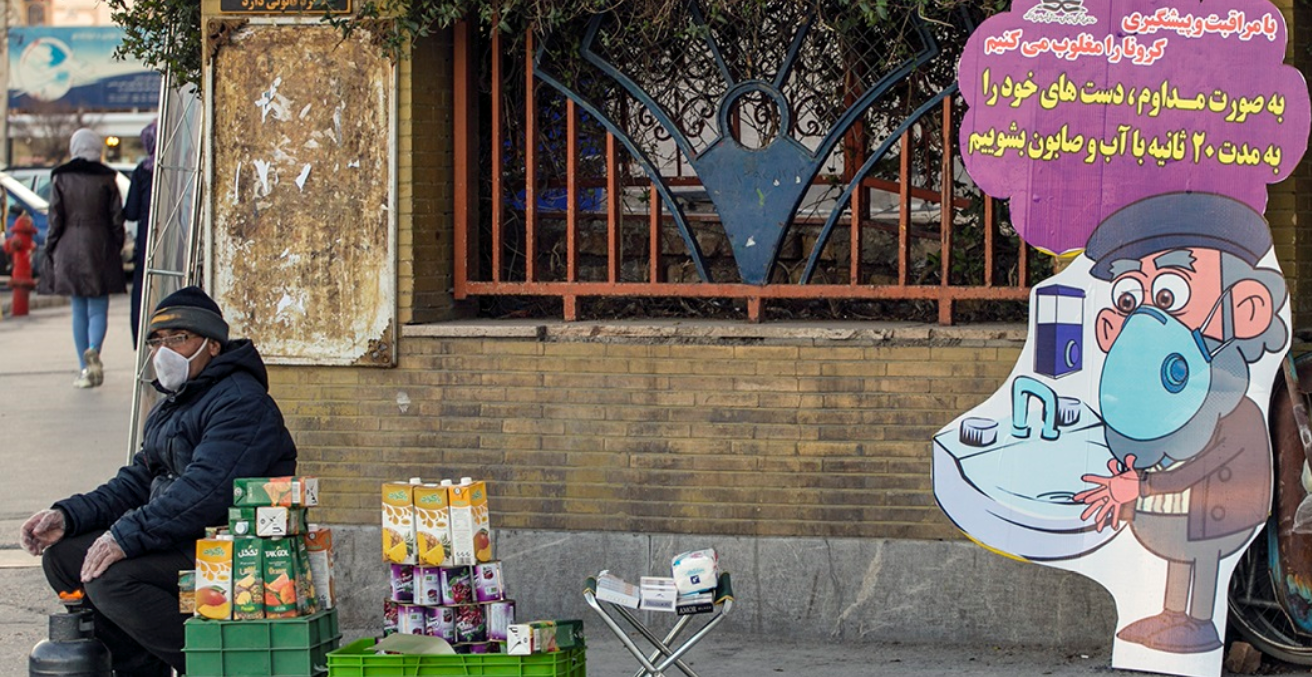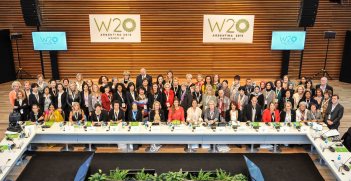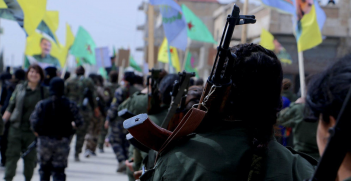COVID-19 in the Middle East: The Second Wave and Its Impact on Australia

The pandemic’s impact has varied across the Middle East, but infections are rising again. The virus is unlikely to be contained quickly, and that will limit Australia’s ability to reopen its borders and economy.
The effect of COVID-19 on Middle East countries has varied depending on whether they are wealthy, poor, or in conflict – as have government responses. Reported numbers of virus-related infections and deaths in the region are largely unreliable. Many Middle East governments (defined for this report to include North African Arab states) have limited testing capacity. Most deliberately understate their figures for domestic political reasons, or to save face internationally. However, the official data provide indications of trends – and these are far from encouraging. They show that while early containment measures caused numbers to dip in April and May, the region has since experienced a rise in infection rates as most states have tried to reopen their economies.
A positive factor is that the region’s population is mostly young and healthy – nearly two-thirds are under 35. That should make them less susceptible to the virus. But that advantage is undercut across much of the region by public health inadequacies. Though the six Gulf Cooperation Council (GCC) states (Saudi Arabia, Kuwait, Bahrain, the UAE, Qatar, and Oman) and Israel have Western-standard medical facilities, one would not want to go to a public hospital in the other 16 Arab League countries or Iran.
With energy the region’s most lucrative export, the collapse in oil and natural gas prices since the start of the pandemic in February has been a double whammy for Arab states. Firstly, it has disrupted the economies and budgetary projections of the energy producers, mainly the Gulf Arab states, causing them to focus on their internal economic difficulties. Consequently, the second half of the whammy is that conservative non-hydrocarbon, and hence relatively indigent, Arab states such as Egypt, Jordan, and Lebanon, which could expect to receive financial assistance from wealthier Arab states during economic slowdowns, now have to fend for themselves.
Wealthy states
Gulf Arab governments are autocratic, so can enforce social restrictions. Gulf Arab states appear now to have instituted good testing regimes and consequently have high reported case numbers – for example, Saudi Arabia has reported 243,238 cases and Qatar 105,477 cases, as of 17 July. They have substantial foreign reserves, so they can cushion the impact of economic shutdowns by increasing subsidies for citizens in much the same way Australia has. However, all GCC states have a substantial foreign labour force, mostly employed in building and maintaining the physical infrastructure of their economies.
These labourers, mainly from the Subcontinent and poorer Arab states such as Egypt, tend to live in crowded camps, often with several individuals to a room. Their living and working conditions preclude social distancing. Those who become sick are not automatically eligible for state-funded health care, and they cannot afford private health care. Many have lost their jobs because of the economic downturn. They seek to return home, and the host governments want them out. But the labourers are hampered by the lack of flights and often, reluctance by their national governments to take them back because of fear the returnees may be infected with the virus. Meanwhile, these workers are a potential source of infection in the wider community. Host governments have little choice but to provide basic medical and other welfare assistance for them or, where possible, to demand that employers shoulder this responsibility.
Israel seemed to have got the virus under control in May, as new infection numbers reduced to a few dozen a day. That led to an easing of restrictions, with schools, restaurants, and bars reopening and employees returning to workplaces. A subsequent sharp rise in the number of cases forced the government to reimpose some restrictions, though these fell short of the total lockdown instituted in March. The government has described this as a “breathing lockdown,” with the strategy being to isolate virus hotspots. Despite this, Israeli figures (which, like the Gulf Arab numbers, can be described as generally accurate) showed around 1,000 new cases a day in late June and early July. That prompted the head of the nation’s Coronavirus Experts Panel to declare that Israel had lost control of the pandemic.
The situation is similar in the West Bank, among Palestinians and settlers. The extent of the virus in Gaza is unknown, given limited testing. However, cases of the virus have been reported there, and their impact will be exacerbated by the overcrowded conditions of the tiny territory.
Poorer States
Egypt’s official figures show the highest death toll in the Arab world – 4,120 deaths as of 17 July – though that number certainly understates significantly the true extent of the virus in this densely populated country of some 100 million. President Sisi has used draconian measures to quell criticism of his handling of the virus. Egypt’s security agencies have arrested health workers who have drawn attention to medical and personal protection inadequacies. Journalists have been similarly warned and a Guardian reporter expelled.
The virus has had a devastating impact on tourism, one of Egypt’s main sources of income. The government decided this month that it had no choice but to live with the virus. It has declared a reopening of workplaces, restaurants, and major airports, with foreign tourists encouraged to travel to resorts on the Red Sea and the Mediterranean. The impact of these measures on spread of the virus, and the extent to which tourists decide to visit Egypt, remain to be seen.
Iran has the region’s highest official infection rate and death toll – 267,061 cases and 13,608 deaths as of 17 July – but this figure is believed to understate the real impact. The virus gained a serious grip on the country in February, when because of parliamentary elections, the government was slow to take measures to contain spread of the virus. As well, public distrust of the clerical regime has been reflected in popular flouting of social distancing restrictions.
States in Conflict
The virus is known to be present in Yemen, Syria, and Libya, but the actual extent is unclear due to limited testing. Fighting, general insecurity, and weak governance over the past nine years have caused substantial deterioration of basic services. Moreover, many hospitals have been damaged or closed as a result of deliberate targeting. The impact of the virus on these states will be examined in more detail in a separate Australian Outlook report to be published on July 23.
Impact on Australia
The virus is, for now, largely out of control in most of the Middle East. With many governments seeking to relax restrictions for economic reasons, further spread of the virus is likely both within states and to states that have had relative success in containing it. The situation is unlikely to improve until a vaccine is available. That is of obvious concern to many Australians with family and friends in the region.
Of similar concern is that several Middle East states, particularly the UAE and Qatar, are transit hubs for many Australian businesspeople or holiday makers travelling westwards. The same is true for their equivalents, particularly from Europe (including the UK) and the Middle East, wanting to visit Australia. While Australia’s borders remain closed to all overseas visitors, that’s not a problem. But Australia is on a just-published list of 15 countries whose citizens will be eligible to enter the European Union Schengen Area once its borders are reopened for non-essential travel. Significantly, the only Middle East state to be included on that list is Tunisia. None of the Middle East travel hubs is on the list.
That’s great news for Australians when borders reopen. But until the Middle East is declared epidemiologically safe, getting to and from Europe will require taking aircraft that don’t “hub” in the UAE or Qatar. That will require quite a bit of oversight and coordination by Australian aviation, health, and border protection authorities. Because of its central geographical position between Europe, Africa, and Asia, the Middle East has the potential to be a super-spreader of the virus for some time to come.
Ian Parmeter worked for 37 years in the Department of Foreign Affairs and Trade), the Department of the Prime Minister and Cabinet, and the Office of National Assessments, He is currently a Research Scholar at the Centre for Arab and Islamic Studies, Australian National University. He can be contacted at ian.parmeter@anu.edu.au.
This article is published under a Creative Commons Licence and may be republished with attribution.





